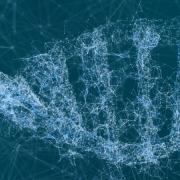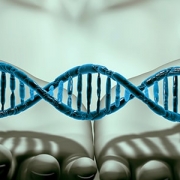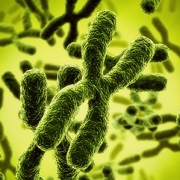Nutrigenomics: 5 facts about your genes, diet and health
As nutrigenomics edges nearer to the mainstream, are we any closer to preventing disease through dietary changes?
Nutrigenomics has been heralded as having the potential to be “the next big thing in our fight against lifestyle-linked diseases”. Yet, within two years of that pronouncement, the field received a body blow as a large European study reported “no evidence that including phenotypic or phenotypic plus genotypic information enhanced the effectiveness of (personalised nutrition) advice.” This followed a 2015 meta-analysis of 38 genes available in commercial nutrigenomics tests, which found “no specific-and statistically significant-association” in any of them.
Is the field of nutrigenomics still worth our interest? To help you make up your own mind, here are five facts about nutrigenomics:
1. Nutrigenomics is a whole system approach
Nutrigenomics examines relationships between what we eat and our risk and response to disease and the molecular mediators – genes and gene expression and biomarkers, such as hormones or metabolites – between them.
2. Nutrigenomics uses many types of tool to identify disease risk and progression
- Food diaries to record nutrient input
- Biomarkers such as metabolite or hormone levels to understand a body’s response
- Genomic assays to identify relevant gene variants
- Clinical data such as age, weight, sex and BMI to monitor the health impact of food
3. Nutrigenomics approaches are being applied to a wide range of conditions
- Risk of developing metabolic syndrome based on genetic variants and contingent on diet/lifestyle
- Links between gut microbiota, obesity and mental health
- Correlation between a specific nutrient intake and disease, such as coffee and cardiac irregularities
4. Nutrigenomics could be leveraged to offer personalised interventions
To identify, and provide supplements to poor metabolisers of folate to reduce the incidence of neural tube defects in pregnancy, or recommending a low fat diet versus low carbohydrate diet as the best way to lose excess weight.
5. It’s early days – and nutrigenomics is complicated
Each of the tools outlined above come with their own, quite significant, limitations:
- Research is ongoing to examine new and existing nutrigenomic biomarkers (for example, miRNAs); however, the interactions between multiple biomarkers in one individual is hugely complex.
- For ‘omics’ assays, basic issues such as which tissues should be analysed are not yet resolved.
- We may have confirmed correlations (for example, between nutrient intake and gene expression), but the underlying causal relationships are still largely a mystery.
- Food and behavioural diaries, which rely on recall and effort, are unreliable.
The bottom line
Existing strategies for priority target diseases, such as obesity, are relatively low tech and inexpensive. Whilst these may not be particularly effective, studies such as the EU one referred to above show that adding nutrigenomic approaches to the mix has no discernible impact in encouraging people to take preventative action. Moreover, the complexity of nutrigenomics – and the resultant high cost of associated applications – suggests that, at least on current knowledge, nutrigenomics approaches won’t reach mainstream healthcare use for some time to come.
Having said this, reputable bodies such as the American Heart Association and the American Stroke Association advocate the hypothesis “that many of the effects of diet on cardiovascular disease (CVD) risk and outcomes are mediated by changes in gene expression (means) the use of global transcriptional profiling is an important tool in nutrigenomic studies”. It can’t be denied that nutrigenomics is being taken seriously by many in medical research.
–









